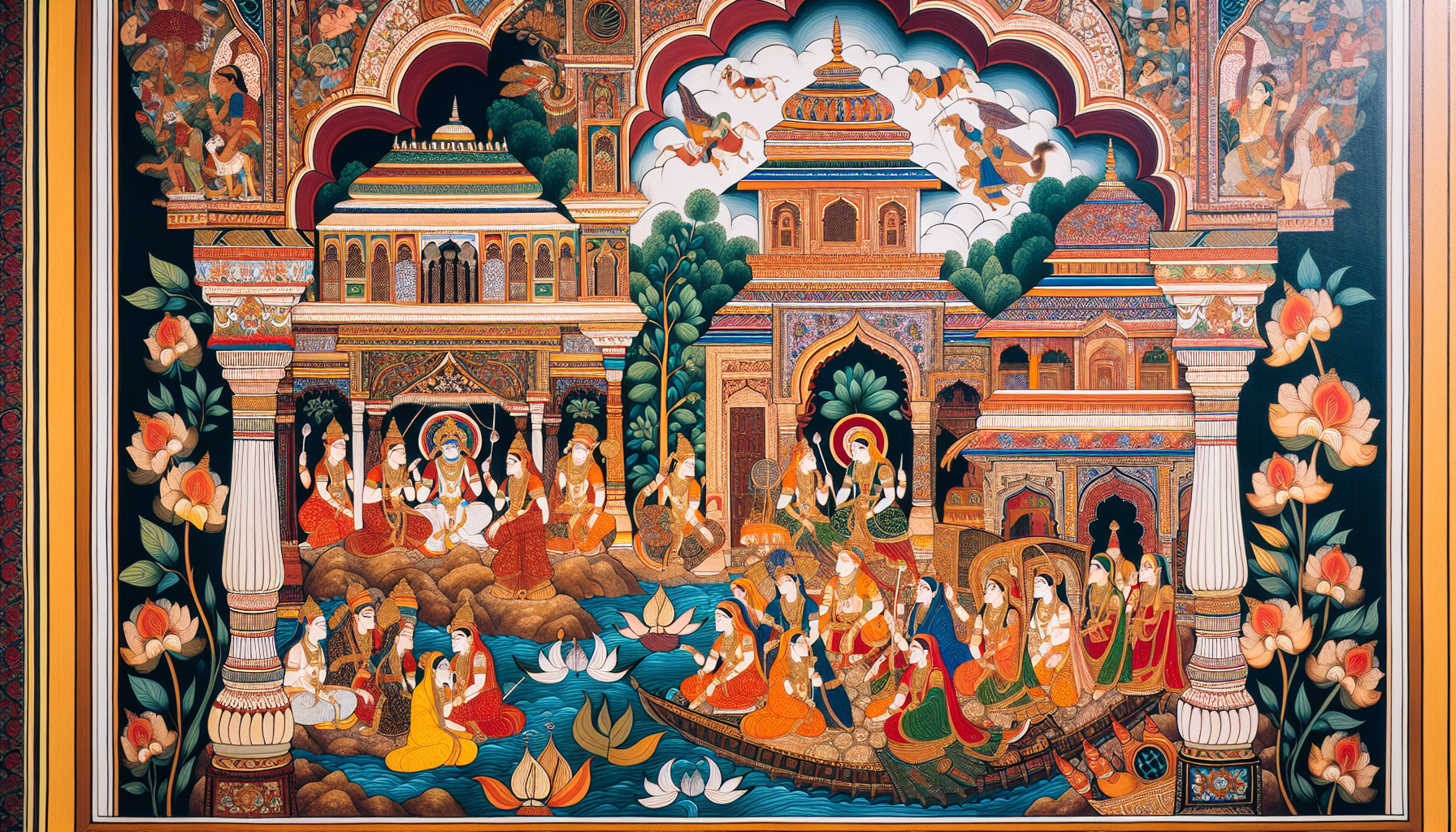Traditional Indian paintings are a captivating reflection of the country's rich cultural heritage, offering a window into its history, traditions, and artistic creativity. These artworks, which have evolved over centuries, remain an integral part of India’s artistic expression, celebrated for their intricate details, vibrant colors, and profound symbolism.
One of the most prominent styles of traditional Indian painting is the Mughal School, which flourished during the Mughal Empire from the 16th to the 18th century. This style is characterized by its attention to detail, realism, and use of vibrant colors. Mughal paintings often depict scenes from court life, battles, and historical events, offering a glimpse into the opulence and grandeur of the period.
Another significant style is the Rajput School, which developed in the royal courts of Rajasthan and other parts of northwestern India. Rajput paintings are known for their bold colors and dramatic portrayals of themes from Indian epics such as the Ramayana and the Mahabharata. These artworks often depict gods and goddesses, heroic tales, and scenes of courtly life, reflecting the artists’ devotion and imaginative storytelling.
In southern India, the Tanjore paintings stand out for their richness and exuberance. Originating from the town of Thanjavur in Tamil Nadu, these paintings are renowned for their surface richness, vivid colors, and compact composition. Tanjore paintings often feature Hindu gods and goddesses, adorned with gold foil, semi-precious stones, and vibrant hues, making them prized for their beauty and spiritual significance.
The folk and tribal paintings of India add another layer of diversity to its traditional art forms. Styles such as Madhubani from Bihar, Pattachitra from Odisha, and Warli from Maharashtra are celebrated for their simplicity and connection to nature and everyday life. These art forms often employ natural dyes and materials, showcasing the artists' deep respect for their environment and customs.
Kalighat paintings, which originated in the 19th century in the vicinity of the Kalighat Kali Temple in Kolkata, are notable for their modern approach and satirical narratives, often depicting social issues and everyday life with a humorous touch. These paintings reflect the evolving social landscape and the artists’ keen observation of their surroundings.
The Pahari school, which developed in the Himalayan foothills, is distinguished by its lyrical and romantic style. These paintings, often illustrating themes from Krishna and Radha's love stories, are cherished for their delicate lines, gentle expressions, and enchanting use of color.
The timeless appeal of traditional Indian paintings lies in their ability to tell stories, convey emotions, and evoke a sense of wonder. As custodians of Indian culture and heritage, these artworks continue to inspire artists and art enthusiasts around the world. In an age of digital and contemporary art, traditional Indian paintings hold a unique place, embodying a blend of history, spirituality, and artistic brilliance that transcends time and geography.
For art lovers and cultural connoisseurs, exploring traditional Indian paintings offers a journey through India's diverse artistic landscape, a testament to the enduring legacy of its rich and vibrant past. Whether viewed in a gallery, a museum, or in their places of origin, these masterpieces serve as a reminder of India’s immense contribution to the world of art.
